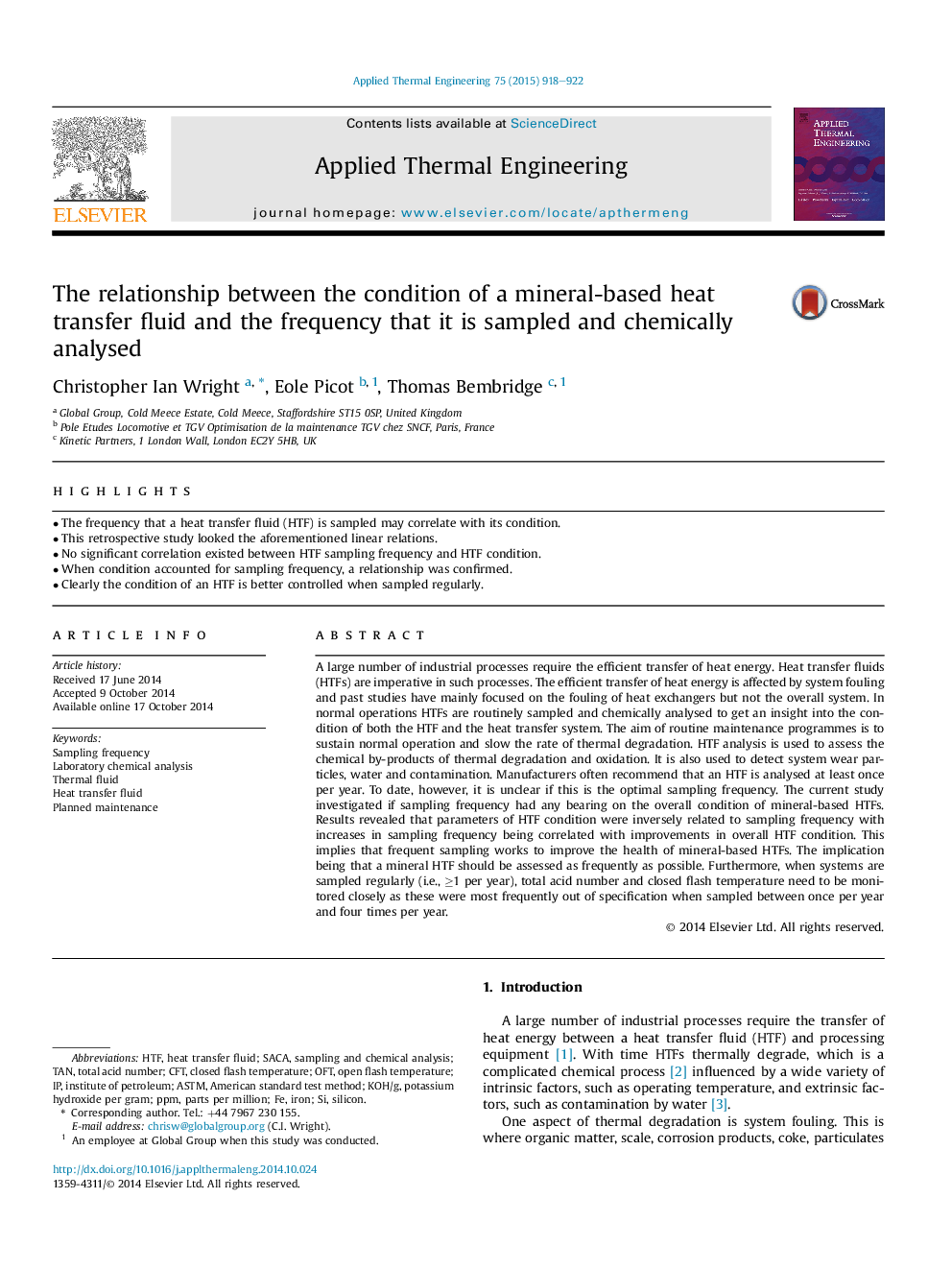| Article ID | Journal | Published Year | Pages | File Type |
|---|---|---|---|---|
| 645971 | Applied Thermal Engineering | 2015 | 5 Pages |
•The frequency that a heat transfer fluid (HTF) is sampled may correlate with its condition.•This retrospective study looked the aforementioned linear relations.•No significant correlation existed between HTF sampling frequency and HTF condition.•When condition accounted for sampling frequency, a relationship was confirmed.•Clearly the condition of an HTF is better controlled when sampled regularly.
A large number of industrial processes require the efficient transfer of heat energy. Heat transfer fluids (HTFs) are imperative in such processes. The efficient transfer of heat energy is affected by system fouling and past studies have mainly focused on the fouling of heat exchangers but not the overall system. In normal operations HTFs are routinely sampled and chemically analysed to get an insight into the condition of both the HTF and the heat transfer system. The aim of routine maintenance programmes is to sustain normal operation and slow the rate of thermal degradation. HTF analysis is used to assess the chemical by-products of thermal degradation and oxidation. It is also used to detect system wear particles, water and contamination. Manufacturers often recommend that an HTF is analysed at least once per year. To date, however, it is unclear if this is the optimal sampling frequency. The current study investigated if sampling frequency had any bearing on the overall condition of mineral-based HTFs. Results revealed that parameters of HTF condition were inversely related to sampling frequency with increases in sampling frequency being correlated with improvements in overall HTF condition. This implies that frequent sampling works to improve the health of mineral-based HTFs. The implication being that a mineral HTF should be assessed as frequently as possible. Furthermore, when systems are sampled regularly (i.e., ≥1 per year), total acid number and closed flash temperature need to be monitored closely as these were most frequently out of specification when sampled between once per year and four times per year.
